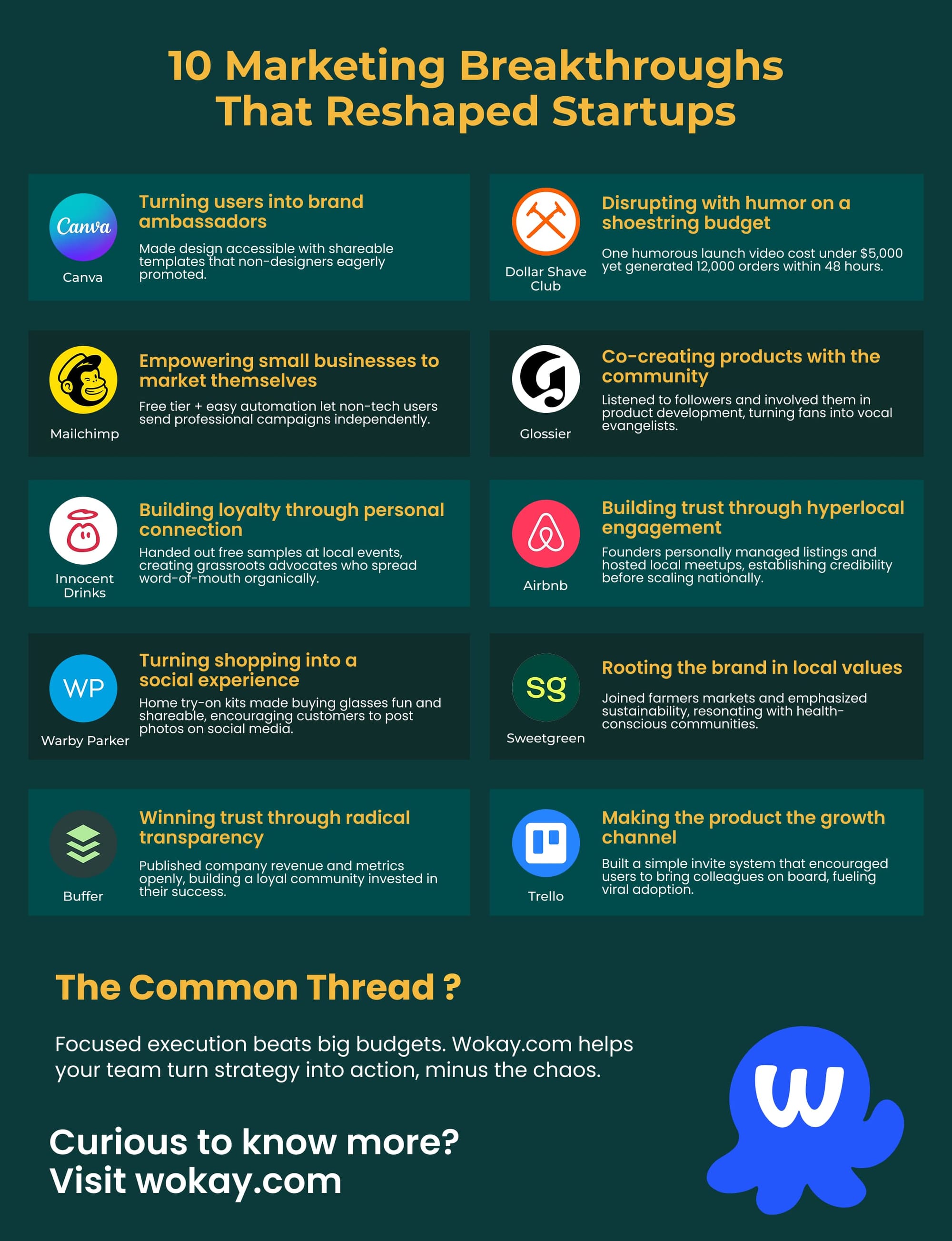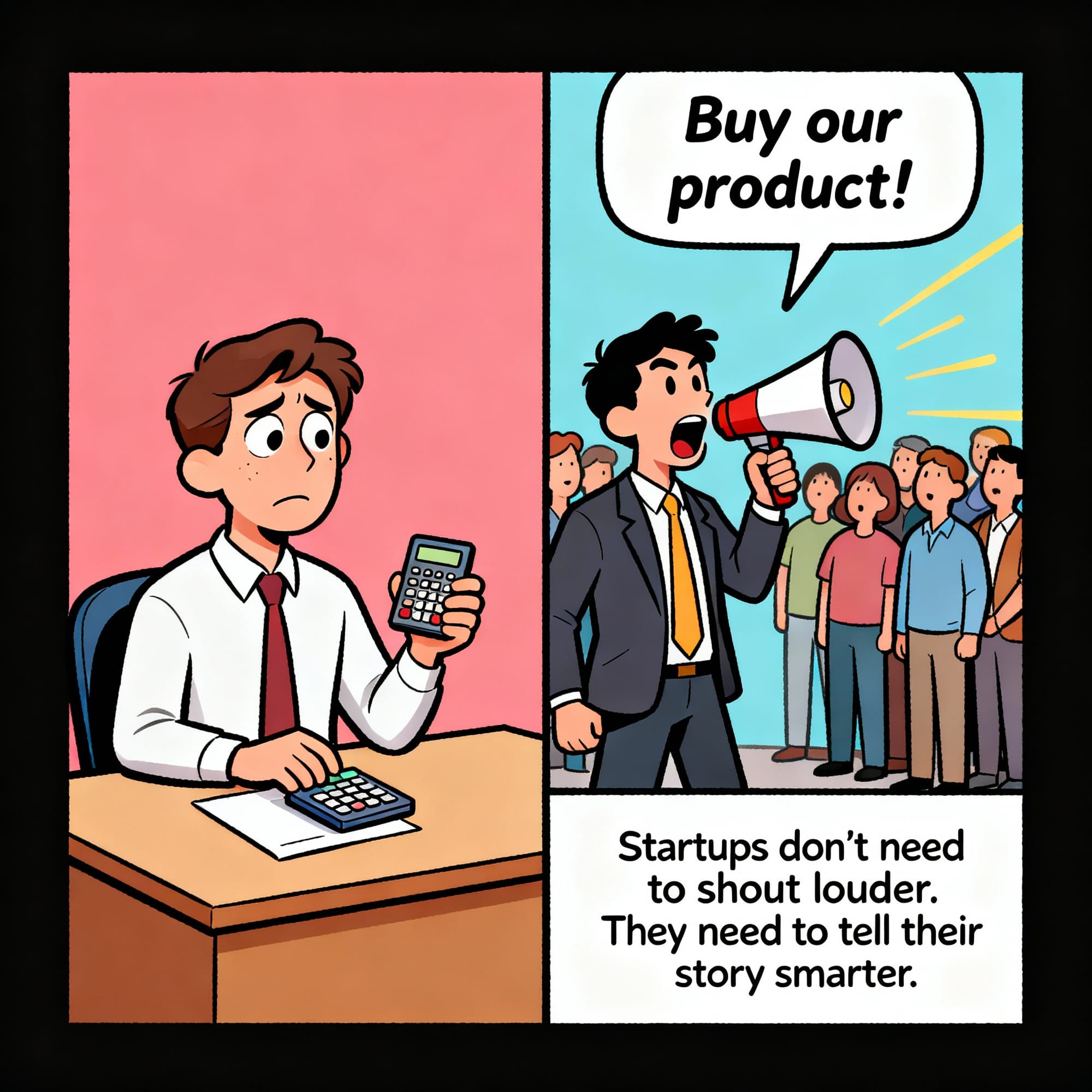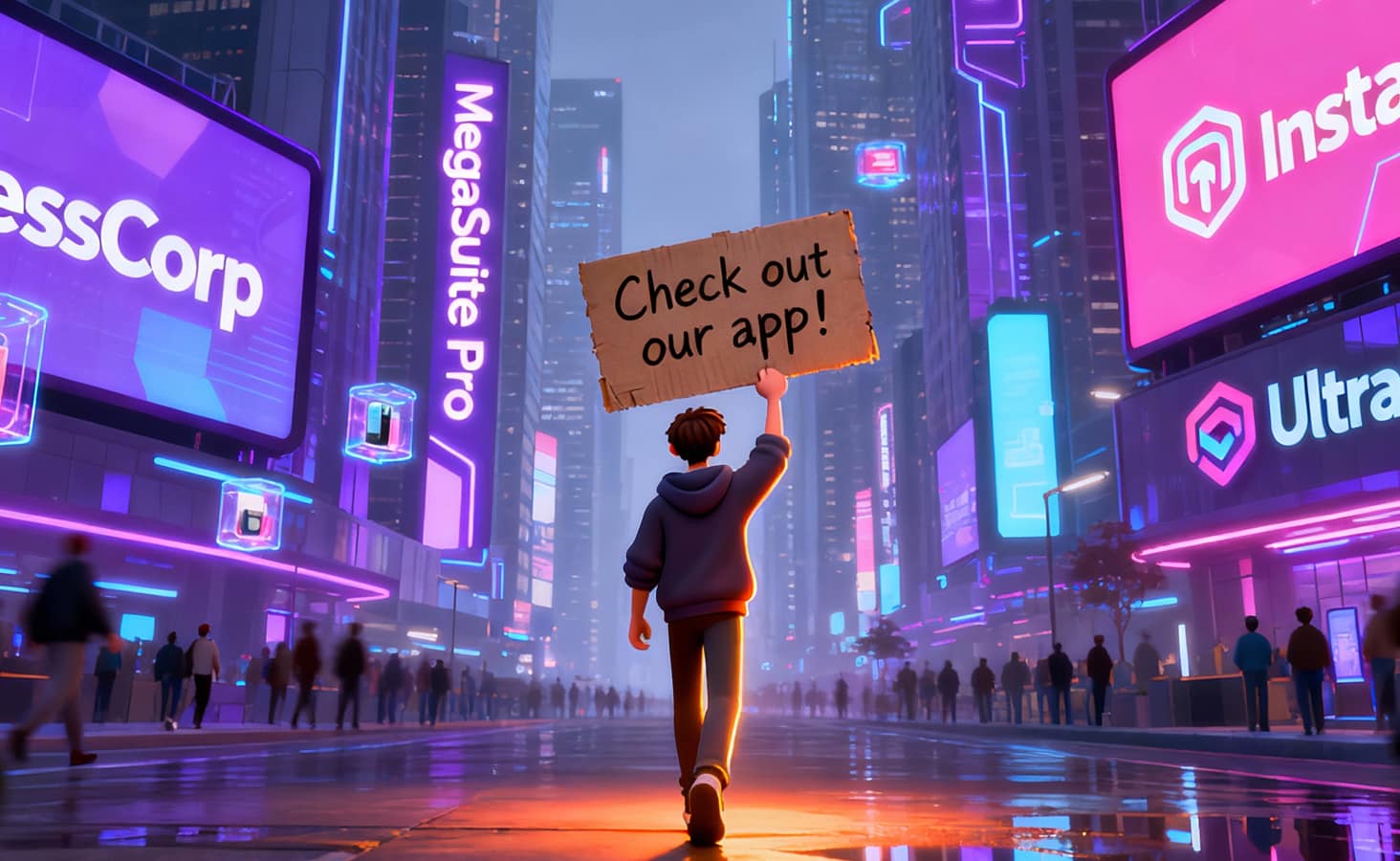Let’s be honest. Marketing looks very different when you’re running a startup or small business. You’re trying to get noticed, build trust, and stand out in noisy markets — all with budgets that wouldn’t even cover a campaign photo shoot for big brands!
According to Statista, India had over 127,000 recognized startups by April 2024. But globally, CB Insights found that 21% of startups fail in the first year, and 38% of them cite running out of cash as the main reason.
That’s why for young companies, marketing isn’t just a “growth lever.” It’s survival fuel.
In this article, we’ll unpack why startups need more marketing than established businesses, explore real examples of low-budget creativity, and walk through practical tactics you can apply right now, even with limited resources.
Why Marketing Matters Even More in the Early Days
For startups, the hardest part isn’t building a product; it’s getting noticed. In a crowded market where established brands already own attention, startups can’t afford to stay quiet. They need to show up, speak up, and do it consistently.
Marketing is how that happens. It builds credibility, creates visibility, and turns first impressions into lasting connections. It starts with showing your face everywhere your audience spends time — through consistent content, active social media, and community engagement. Visibility builds awareness, and awareness builds trust.
Then comes proof. Real customer stories, testimonials, and case studies help startups stand out when no one knows their name yet. Every post, comment, or success story adds to that credibility.
And it works.
Salesforce reports that 53% of shoppers discover products on social media, rising to 76% for Gen Z. MarketingProfs also notes that most small business owners find customer acquisition their biggest challenge.
That’s why the startups that test, learn, and push harder with data-backed marketing are the ones that grow faster and stay ahead in the race for attention.
Real Low-Budget Marketing Stories: Creativity Before Fame
Smart marketing isn’t always about spending more; it’s about standing out more. These brands proved you can do that on a shoestring:

Canva
Before Canva became a graphic design giant, its founders focused on building a freemium platform that was ridiculously easy to use, even for non-designers.
They invested heavily in creating viral, educational content such as quick design tutorials and social media templates that users could share freely.
By making design accessible to non-designers, they sparked organic word-of-mouth and leveraged user-generated content to grow early adopters — long before any big paid ad campaigns.
Mailchimp
Mailchimp grew primarily through a free tier that targeted small businesses and freelancers, allowing users to send emails for free up to a certain limit.
They invested in educating their audience through blog posts, simple UI design, and active customer support, creating strong customer trust.
This community-first approach turned users into advocates who organically spread the word about Mailchimp’s ease of use and reliability — building momentum without expensive acquisition campaigns.
Innocent Drinks
Innocent started by selling smoothies at local events and festivals, handing out free samples and engaging directly with customers.
This grassroots approach helped them gain authentic feedback and early brand advocates. The founders became known locally for their friendly, approachable style — which created a strong community attachment before broader supermarket distribution deals.
Warby Parker
Warby Parker shook up the eyewear industry by launching a home try-on program, allowing customers to order five frames to try for free at home.
They encouraged customers to share photos on social media, sparking word-of-mouth buzz.
This innovative blend of offline experience and online sharing helped them build a loyal following cheaply, when traditional eyewear companies relied heavily on expensive retail networks.
Buffer
Buffer grew by openly sharing their company’s metrics, revenue, and learning transparently with their community. This radical openness built an authentic connection with early adopters, who then enthusiastically promoted Buffer within their networks.
They also focused on simple, helpful blog content and actively listened to user feedback, refining their product organically—long before major venture capital funding.
Dollar Shave Club
Launched with a humorous viral video costing around $4,500, Dollar Shave Club used clever storytelling and humor to differentiate itself in a crowded market.
The video rapidly went viral, gaining 12,000 orders in the first 48 hours without traditional expensive ad campaigns.
Glossier
Glossier focused heavily on community and social listening from day one. They engaged followers on Instagram and invited customers to co-create products based on feedback.
Influencer and peer recommendations drove growth, minimizing paid advertising spend early on.
Airbnb
In its early days, Airbnb founders personally photographed their listings and used Craigslist’s platform to cross-promote, tapping into existing marketplaces without heavy ad spend.
They also hosted meetups and created user-generated content campaigns, building community trust and visibility.
Sweetgreen
Sweetgreen initially focused on local farmer’s markets and community events to build relationships in their neighborhoods. Their marketing leveraged a purpose-driven narrative about sustainability and healthy eating.
This generated grassroots word-of-mouth and local media coverage.
Trello
Before being acquired by Atlassian, Trello grew by launching a freemium product with an easy-to-use interface and viral invite system.
Early marketing focused on content marketing and active participation in productivity forums and communities to build adoption through organic recommendations.
These narratives highlight how creativity, community, and authentic engagement can overcome budget constraints to drive startup marketing success.
Small Business Marketing Strategies You Can Use Now
Big ideas inspire, but execution is what moves the needle. Here are proven, budget-friendly strategies that small businesses can start applying today.
Build a Strong Social Media Presence
Stick to one or two platforms where your audience already spends time. Respond quickly and engage often. The Salesforce State of Marketing 2024 report
notes that 93% of marketers use social media, with influencer collaborations now driving measurable results.
Personalized LinkedIn Outreach: Focus your efforts on personalized LinkedIn messages to reach your ideal audience directly. Engage meaningfully and share tailored content—this costs almost nothing but can generate strong leads and lasting connections.
Create Content That Teaches
Build authority by solving customer problems through blog posts, tutorials, or videos. Over 50% of marketers used generative AI in 2023 to assist with content creation (Salesforce) — proof that small teams can punch above their weight with the right tools.
Master Local SEO
Claim and optimize your Google Business Profile with accurate details, photos, and updates. Local visibility drives discovery, especially for brick-and-mortar startups. A BrightLocal study found that 87% of consumers read local business reviews online in 2023.
Repurpose Content with Smart SEO
Turn one content asset into multiple formats — blog posts, infographics, social snippets — to extend reach affordably.
Pair this with smart SEO using long-tail, less competitive keywords. This helps attract niche audience segments through organic search, without paid ads.
Leverage Email Marketing
Email remains unbeatable for ROI, delivering $36–$40 per $1 spent, according to
Litmus.
Create a lead magnet like a discount or free guide to grow your list and nurture relationships consistently.
Run Ads on Niche Platforms
Experiment with low-cost, targeted ads on Reddit where they can sponsor campaigns in tightly focused niche communities.
Costs are lower compared to Facebook or Google, offering a creative way to reach passionate user groups.

Collaborate With Complementary Brands
Team up with non-competing businesses for co-marketing initiatives, like joint webinars, social shoutouts, newsletters, or bundled offers. Shared audiences double exposure at zero cost.
Start a Referral Program
Encourage happy customers to refer friends with discounts or rewards. Word-of-mouth marketing converts 2x better than paid ads, according to Nielsen.
Work With Micro-Influencers
Instead of chasing big names, collaborate with creators who have 5,000–50,000 followers in your niche. Their communities are more engaged and authentic, which translates to better conversions.
Showcase Customer Stories and Reviews
Display real customer feedback and testimonials across your website and social media. According to HBR, authentic storytelling builds trust faster than paid messaging.
Host Free Webinars or Community Meetups
Whether online or in-person, educational sessions help you engage potential customers meaningfully. They position your brand as helpful and knowledgeable while driving word-of-mouth organically.
Guerrilla Marketing Stunts
Creative physical marketing connects with people in ways they remember. It sparks social shares and organic buzz without the need for big media spends.
Think pop-up events, flash mobs, or branded photo booths at local fairs. Even small businesses can stand out by giving away simple items like stickers or mugs in busy areas, creating lasting impressions that go beyond the moment.
Free Samples and Swag in Orders
Physical product startups often boost word-of-mouth by including swag or free samples in every order, encouraging customers to share unboxings on social media. For instance, a food startup using delivery services to send free samples to potential buyers created buzz that translated into sales.
Focus on Retention Over Acquisition
It costs five times more to acquire a customer than to retain one. Salesforce’s consumer insights show that 74% of shoppers leave a brand after just three bad experiences. Loyalty programs, personalized updates, or surprise rewards can make retention your best growth engine.
The golden rule: pick a few of these strategies and do them well. Spreading thin rarely wins; consistency does.
For Startups and Small Businesses: Marketing Isn’t Optional, It’s Survival
CB Insights highlights that 38% of startups fail because they run out of cash, while 35% fail due to poor market fit. The difference between those that survive and those that don’t often isn’t the size of their budget: it’s how well they connect with their audience.
How Wokay.com Helps You Market Smarter
Successful marketing depends on coordination — something many small teams find challenging.
Wokay.com brings campaigns, tasks, and communication into one simple workspace, so your team works in sync and stays focused. With fewer tools to juggle and clearer visibility, every effort counts.
Bottom line: When your team moves together, marketing becomes sharper and results stronger. Turn limited budgets into focused action, and focused action into growth.
Curious what Wokay.com can do for your business?

